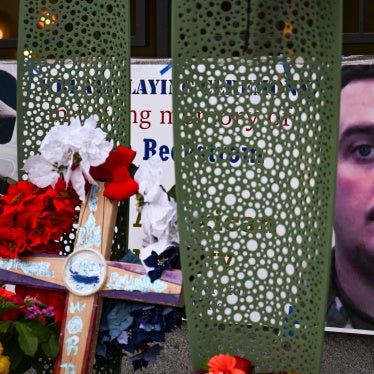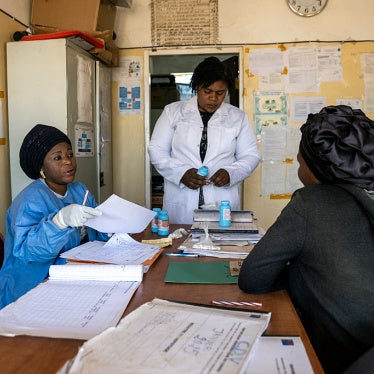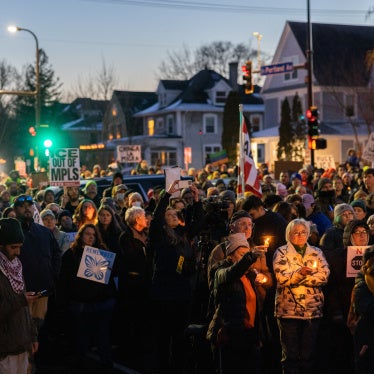KABUL — The Hazaras stand apart in Afghanistan. Their ethnic appearance is disctinct, and theirs is a Shiite faith in a Sunni-majority country. They are one of the three big ethnic groups, but theirs is a long history of persecution that has included massacres and cultural losses such as the destruction of the centuries-old Buddha statues of Bamiyan, which the Taliban blew up only months before al-Qaeda’s attack on the Twin Towers, and years before the so-called Islamic State put its iconoclasm on social media. The Hazaras are the canaries in a coal mine, and the treatment they receive is often a harbinger of things to come for the wider population of Afghanistan and perhaps even for the wide world.
On April 14, four Hazara farmers were kidnapped in Ghazni province as they were buying livestock in the local market. Gunmen reportedly beheaded the four on April 17 after local authorities rejected the kidnappers’ demands to release insurgent comrades in government custody. The killers were said to be either Taliban or followers of the Islamic State, also known as ISIS, which has been establishing a foothold in Afghanistan and may be bringing with it the same ferocious practices it has used against the Shia and Yazidis of Iraq.
This is not an isolated incident—but a deadly new trend. Many similar atrocities against Afghanistan’s Hazara ethnic group have taken place in recent months. The Taliban and other insurgents have begun targeting ethnic Hazaras for abduction as bargaining chips in government negotiations or for execution. As the Taliban launch their spring offensive, and reports of the possible growing influence of militant groups claiming affiliation to the Islamic State in Afghanistan increase, security fears within the Hazara community are escalating.
Two weeks earlier, on April 2, Taliban insurgents abducted 11 Hazara men, mostly laborers, travelling in Balkhab district of northern Sar-i-Pul province. The Talibanreportedly justified the abduction as a means to intimidate Hazaras of Balkhab into not supporting the government. The insurgents released the men on April 14 after local elders, who are influential and sometimes successful mediators, intervened. On March 16, masked gunmen abducted six Hazara bus passengers traveling on the Herat-Farah highway. Their fate and the motive behind their capture remain unknown.
But the kidnapping that has most disturbed the Hazaras and the broader Afghan community in Afghanistan and abroad has been the February 24abduction of 31 Hazara bus passengers who werepicked one by one from non-Hazaras in buses in southern Zabul province. The abduction reportedly occurred between two government checkpoints, fueling criticism that police must have witnessed the perpetrators arrive and leave, but failed to intervene. No group has claimed responsibility for the abduction. The group has also not made its demands public, but hasreportedly sought the release of a dozen jailed anti-government militants in exchange for the Hazara hostages. Afghangovernment efforts to release the hostages have met with partial success.
Kidnappings have long been a tactic of both insurgents and criminals in Afghanistan. The victims have come from all ethnic backgrounds and included aid workers, businessmen and their relatives, as well as government officials. The criminal motives for kidnapping in Afghanistan, like elsewhere, are financial. Insurgents have also used kidnapping for motives ranging from extorting ransoms, pressuring officials to leave their government jobs, discrediting the government as powerless to protect its citizens and, increasingly, as hostages to swap for prisoners in government custody.
The laws of war prohibit the taking of hostages, which is defined as threatening to harm or continuing to detain a person to compel a third party to do or abstain from doing something as a condition of release. Hostage-taking of civilians for use as leverage in a conflict is prohibited by the Geneva Conventions and constitutes a war crime. The kidnappings and summary executions have further restricted the already constricted freedom of movement of the Hazaras. They signal that Hazaras may be targeted even if they have no association with the government or nongovernmental organizations.
The spike in ethnically targeted abductions and killings of Hazaras comes at a time when security is deteriorating and Afghan troops are thinly stretched. Civilians increasingly bear the brunt of the violence of the conflict. But the targeting of Hazaras, for whom the memories of the Taliban’s atrocities of the 1990s remain fresh, heightens concerns about their vulnerability.
Before 2001, Afghan Hazaras endured horrific abuses under the Taliban, including a campaign of ethnic cleansing documented by Human Rights Watch inYakawlang, Baghlan and Mazar. In Pakistan, more than 500 Hazaras, many of whom are Afghan refugees, were systematically targeted and killed by the militant group Lashkar-e-Jhangvi between 2008 and 2014, while the Pakistani government has done little to protect them.
The United Nations has reported that insurgents are responsible for two-thirds of all civilian casualties in Afghanistan, and the Taliban, while claiming to protect civilians, have had a stated policy of targeting civilians deemed to be associated with the government. But these attacks based on ethnic identity, rather than affiliation with the government or armed forces, represent an alarming new trend.
Given the increase in apparently ethnically motivated attacks on Hazaras, the government should move quickly to address the issue head-on. The government has increased police presence in certain areas, but it urgently needs to take stronger, more targeted actions. It can do this by bolstering security in areas with sizeable Hazara communities and better secure the highway stretches frequented by Hazara passengers that have become common kidnapping routes. Until the government takes action, Hazaras in Afghanistan will continue to be targeted.








